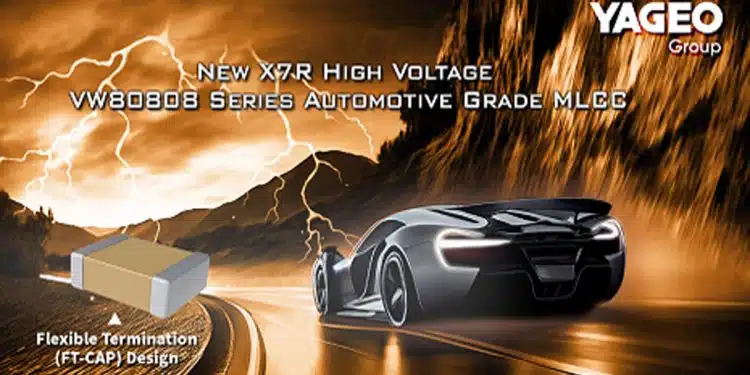KEMET, part of the YAGEO Group and leading global electronic components supplier, announces the new X7R high voltage VW80808 series automotive grade MLCC.
With case sizes ranging from EIA 0603 to 1210, these MLCCs are available from 100pF – 0.1uF with DC voltages from 500V to 1kV.
The high voltage VW80808 automotive grade flexible termination (FT-CAP) multilayer ceramic capacitors in X7R dielectric are suited for a variety of applications requiring proven, reliable performance in harsh-environment conditions.
Whether automotive under hood or in-cabin, these devices emphasize the vital and robust nature of capacitors required for mission and safety of critical automotive subsystems and are compliant with AEC-Q200 and VW80808 specifications.
These devices use flexible termination technology that inhibits the transfer of board stress to the rigid ceramic body, therefore mitigating flex cracks, which can result in low IR or short circuit failures.
Features
- VW80808 Specification Compliant
- AEC–Q200 automotive qualified
- Superior flex performance (5 mm minimum)
- DC voltage ratings of 500V, 630V ,1KV
- Lead (Pb)-Free, RoHS and REACH compliant
Applications
- Direct Battery/Power Circuits
- Filtering (power plane/bus)
- High Voltage Heater
- Inverter, DC/DC
- BMS
- Power Factor Correction
































